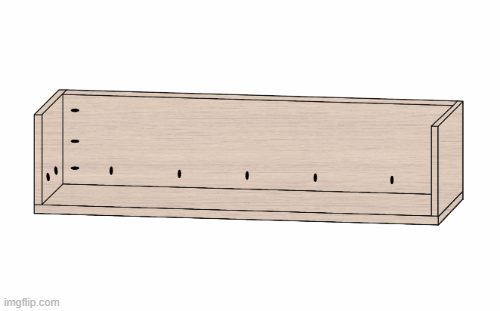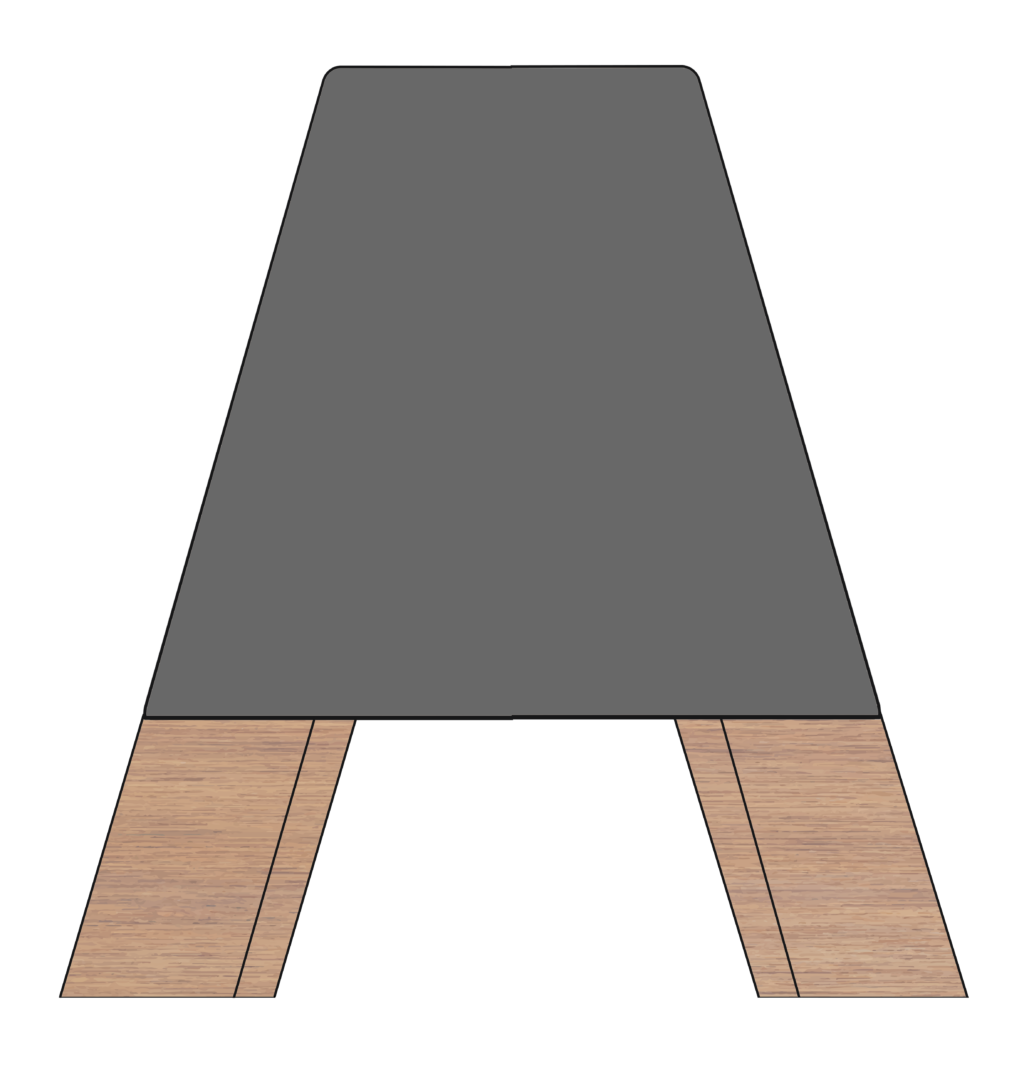If you’re just getting with woodworking or looking to make some additions to your home or workspace, we’re here to help with these simple woodworking projects.
Floating Shelves
Floating shelves are a great way to save space and keep your home organized. Keep items you use regularly or art on display and out of the way. Use floating shelves where traditional shelves may not be suitable. Not only are floating shelves easy to install, but they’re easy to make!
What you’ll need:
Tools
Materials
(2) 1 x 12 x 6ft wood board
(2) 2 x 4 x 8ft wood board
(1) 1 x 6 x 8 ft wood board
• 1-1/4in pocket screws
• 3-1/2in wood screws
Cut List
On the 1 x 12 x 6ft boards:
(2) 71-1/2in cuts

On the 1 x 6 x 8ft board:
(1) 73in cut
(2) 11-1/4in cuts

On the 2 x 4 x 8ft boards:
(1) 71-1/2in cut
(6) 9-3/4in cuts

Instructions
- Use a pencil and tape measure to mark the wood with the measurements under the above cut list.
- Get your PPE on to prevent injury.
- Use a miter saw like the Makita 12 In. Compound Miter Saw will be used to make the previously marked cuts.
- Sand the edges of the boards until they’re smooth.
- Stain the wood of the box at this time.
Assemble and Install Frame
- Arrange the 2 x 4 x 9-3/4in wood pieces along the 2 x 4 x 71-1/2in woodcut with 14 inches of space between each piece as shown below.
- You can use a carpenter square to ensure your edges are flush and perfectly square.
- As shown below, use your Pocket Hole Jig to create two pocket holes.
- Connect the six 2in x 4in x 9-3/4in pieces of wood to the 2 x 4 x 71-1/2in piece using 2-1/2in pocket screws with 14 inches between each.

Assemble the Box
- For the box, you’ll need the following wood cuts:
- (2) 1 x 12 x 71-1/2in
- (2) 1 x 6 x 11-1/4 in
- (1) 1 x 6 x 73in
- Drill the pocket holes and as shown below.
- Assemble the box using 1-1/4in pocket screws.

Complete the Box
- Drill pocket holes as shown below.
- Attach the last 1 x 12 x 71-1/2in board to the bottom of the box using 1-1/4″ pocket screws.

Attach the Frame to the Wall
- Using a stud finder, find the wall studs.
- If you’re using a wall in which it doesn’t work to use the studs, be sure to find wall anchors that support the weight of the shelf and items on the shelf.
- Once the studs are found, mark them and hold the frame to the wall and level it.
- Mark the frame and use a small drill bit to predrill a hole on the mark.
- Use an impact driver to drive the screw through the frame and into the studs.
- You’ll be attaching the frame to the wall with the 2 x 4 x 71-1/2in board touching the wall using 3-1/2in wood screws.
Attach the Box to the Frame
- Fit the box over the frame and mark where the screws will be.
- The screws will be gong through the box into the 9-3/4in pieces.
- Take the box off the frame and make a small predrilled holes.
- Place the box back over the frame and attach using 1-1/2in wood screws using your impact driver.


Stackable Sawhorse
Another useful woodworking project is stackable sawhorses. These quick, easy sawhorses will come in handy for future woodworking endeavors. These plans make one sawhorse, you’ll need to increase your materials based on the number of sawhorses you’ll be making.
What you’ll need:
Tools
Materials
(3) 2 x 4 x 8ft wood board
(1) 1/2in x 2ft x 2ft plywood
1-5/8in screws
2-1/2in screws
Cut List
On the 2 x 4 x 8ft boards:
(4) 28in
(3) 36in

On the plywood

Instructions
- Use a pencil and tape measure to mark the wood with the measurements under the above cut list.
- Get your PPE on to prevent injury.
- Use a miter saw like the Metabo HPT 10″ Compound Miter Saw to make the cuts under the cut list.
- Use a jigsaw such as the BOSCH Top-Handle Jig Saw to cut the gussets.
- Sand the edges of the boards until they’re smooth.
- Stain the wood of the box at this time.
Create an I-beam for the Sawhorse
- Use the (3) 36-inch long pieces to create the I-beam.
- Center (2) of the pieces over the middle support beam with 1in space on either side.
- Predrill through the top and bottom beams on each side.
- Place wood glue on all connecting sides of the wood boards to provide extra support.
- Use the 2-1/2in screws to attach the top and bottom beams to the middle support beam.

Fitting the Legs
- Align the edges of the 28in boards to the top board of the I-beam. Make sure they’re flush.
- Predrill (4) holes into each leg of the sawhorse and through the top and bottom boards of the I-beam
- Connect the legs to the I-beam using 2-1/2in screws.

Attaching the Plywood Gussets
- Make sure the gussets are cut correctly according to the above cut list.
- Before attaching them, make sure they sit flush on all sides.
- Predrill (4) holes, (1) on each corner of the gusset.
- Attach the gusset to the I-beam using 1-5/8in screws.

After the gusset is attached, you’ll want to sand any remaining rough edges and check to ensure joints are sturdy.

Repeat these steps for as many sawhorses as you’d like.




